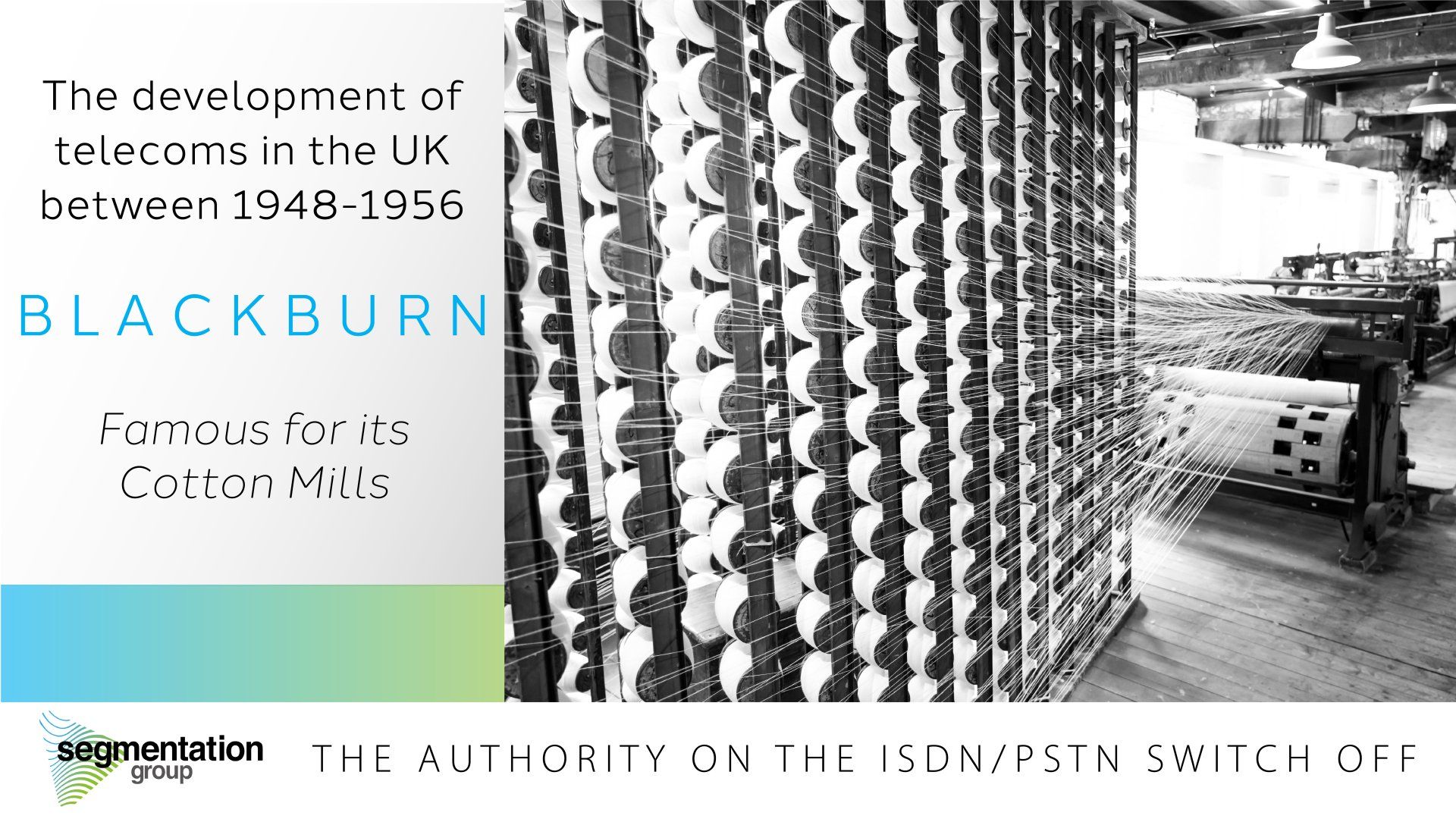The Development of Telecoms - Blackburn

The Blackburn area, which is situated astride the Lancashire and Yorkshire border, comprises the four large manufacturing towns of Blackburn, Bolton, Burnley and Rochdale, the towns of the Rossendale Valley and the surrounding districts. Although the southern part is industrial, it contains large tracts of moorland and, to the north, the forests of Bowland and Pendle, the Ribble and Hodder Valleys, all of which are of exceptional natural beauty.
There are many places of historical and literary interest in the area— notably Pendle Hill and Whalley Abbey around which Harrison Ainsworth and other writers have woven their stories about the Lancashire Witches. At Wycoller, on the border of the area, near Colne is Wycoller Hall which Charlotte Bronte in Jane Eyre calls Ferndean Manor. The Grant Brothers, mill owners of Ramsbottom, were the originals of Charles Dickens' Cheeryble Brothers. Downham is regarded as one of the loveliest villages in England, at Ribchester the Romans had a station, while at Hoghton Tower in 1617, James I was so pleased with the loin of beef served at table that he knighted it "Sir Loin“.
The inventions of the flying shuttle by John Kay of Bury, the spinning jenny by James Hargreaves of Stanhill on the outskirts of Blackburn, the spinning frame by Richard Arkwright of Preston, the combination of the jenny and frame by Samuel Crompton of Bolton and the invention of the steam engine by James Watt in 1770 lead to the erection of spinning mills and at the beginning of the 19th century Blackburn had three such mills and home spinning and weaving began to decline.
Blackburn is now the centre of what is probably the largest cotton manufacturing area in the world, but many other heavy and light industries are also carried on.
Blackburn and Accrington automatic exchanges, opened in 1916, are among the oldest automatic exchanges in the country and many leading townsmen of Blackburn played an important part in the early days of the National Telephone Company. Among them were Mr W E L Gaine, General Manager and Mr Eli Heyworth, Chairman of the Executive.
The area covers about 622 square miles and contains 48 exchanges with 50,814 exchange connections and 81,214 stations. The total staff (excluding telephonists) is 872.











